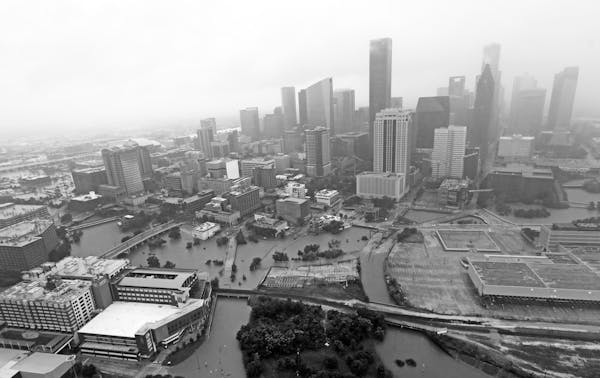MIAMI – Hurricane Irma mercifully weakened before it swept much of Florida with hurricane-force gusts. But the gridlocked madhouse caused by the largest evacuation in Florida's history shows just how vulnerable runaway development has made one of the nation's fastest-growing states, emergency planners say.
"We have to stop and take a deep breath and ask, 'What are we doing?' " said David Paulison, a former Miami-Dade County fire chief who led the Federal Emergency Management Agency under President George W. Bush. "The more people we put here, the worse it's going to be for evacuation."
Irma could have been Florida's worst nightmare: A massive Category 5 hurricane wide enough to hit both of the state's densely populated coasts, where growth has boomed despite the obvious risks of living on the water in an area regularly walloped by storms. The push for more development — one of Gov. Rick Scott's central policies in his successful effort to revive Florida's economy — is elevating the risks to both people and property, said Craig Fugate, FEMA chief under President Barack Obama and the state's emergency management director under Gov. Jeb Bush.
"We're trying to evacuate more people over the same infrastructure," Fugate said. "It's something Florida has to revisit."
Even though Florida was spared from catastrophic damage, the evacuation — which experts say saved lives — felt like a disaster of its own to residents. Highways backed up for hours as people fled north. And state transit authorities were unwilling to change the direction of lanes because emergency vehicles and supplies needed to keep heading south toward the storm.
Valerie Preziosi and her husband, Jan Svejkovsky, left their home on Big Pine Key with their two cats. They booked a hotel room in Orlando but changed course for Waldo, in north-central Florida, when the hotel didn't answer their calls. Then, as Irma wobbled, Waldo found itself at risk of flooding. Like many evacuees, they'd fled from one danger zone to another. So they drove even farther north to Macon, Ga.
"We kept getting pushed up because the storm was pushing behind us," Preziosi said.
The worst was yet to come: Getting back from Macon to Orlando — normally a five-hour trip — took 14 hours.
"It was horrible, I mean horrible," she said.
With gas stations locked and powerless, "there was no way to use a restroom," Preziosi said, "so there were people in the middle of highway traffic getting out of their car. There was an elderly woman being dragged out so she could have a bowel movement in the middle of the road. The whole thing was so surreal."
That's not to say the evacuation was ill-advised: Irma missed a devastating direct hit, but the storm still wiped out parts of the Florida Keys and Marco Island, flooded Jacksonville and briefly turned downtown Miami's major thoroughfares into white-capped rivers. Getting people out was the safest move, the governor said.
"My goal is keeping everybody alive," Scott said.
If there is another major storm, "I'm going to do everything I can," the governor said, "to get everybody out of their homes and get everybody to shelter. … It's an inconvenience to be displaced out of your home, it's an inconvenience to be without power, it's an inconvenience to try to find fuel, but the most important thing is [to] survive."
More than 6 million people were ordered to flee their homes, and at least six people died in car crashes described as storm-related. It's not yet clear if any of the dead were evacuees.
But while Florida's evacuation had problems, Paulison said, "for the amount of people that moved, it went fairly well."
The bigger crisis will come as Florida keeps growing.
The state is built for bottleneck: If a storm sweeps up the peninsula from the south, the only way out is north. Florida only has three major north-south arteries: the Florida Turnpike and Interstate 95 on the east coast and Interstate 75 on the west.
Both Paulison and Fugate said they support new development — if it's done smartly. But they cautioned the entire state may need to look to the Florida Keys for evacuation solutions. The Keys area has limited its growth because of the potential for gridlock along the Overseas Highway, the island chain's only exit. And it conducts evacuations in stages, with tourists ordered out first and residents following.
Florida is now the fourth fastest growing U.S. state. Big storms aren't scaring away new residents.
Since 1990, two years before Hurricane Andrew struck, the state added roughly 8 million new residents, bringing its population to nearly 21 million. That's a growth rate of 59 percent, almost double the national average.
"The issue is not that we developed too fast, it's that we developed the wrong way," said Richard Florida, an urban planning expert at the University of Toronto and visiting fellow at Florida International University.
In 2011, Scott signed a repeal of the state's growth management law and abolished the agency responsible for ensuring that county building plans would not hinder evacuations. A development rush across the state followed. But long-term safety risks are a worry.
"Everyone hates red tape," Fugate said. "But Irma's an example of what happens when you get rid of red tape and you just build."
